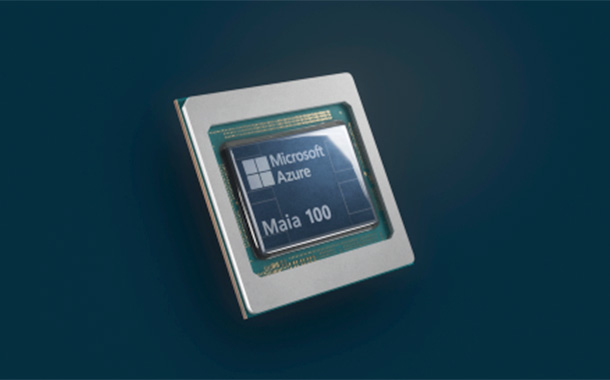The ability of organisations to realise business value from data increasingly depends on their capacity to collect, process, store and analyse it at the edge, new research from Aruba, a Hewlett Packard Enterprise company, suggests. As networks become increasingly congested with huge volumes of data generated from user and IoT devices, IT leaders are recognising that analysing real-time data nearer to the edge yields greater efficiencies and insights, which results in improved business outcomes.
According to the UAE results of a global study of 2,400 IT decision-makers, 61% of UAE enterprises are already actively using edge technologies to deliver new outcomes, with another 14% planning to do so in the next year. There is also a growing recognition, 86%, of the urgency around the need to implement integrated systems to handle data at the edge.
The survey findings form part of a report entitled, At the Edge of Change: Navigating the New Data Era, that assesses the implications of the shift in data processing from cloud to edge, how IT Decision Makers, ITDMs, are responding to this trend, the opportunities the edge presents for a number of major industries and the critical role networking plays in this transformation. Key findings reveal:
Edge as a solution
The benefits of edge technologies are becoming increasingly important as ITDMs grapple with the growing amounts of data generated within their networks and look towards the cost and latency advantages of storing and processing it at the edge.
- 47% of ITDMs in UAE said that there is too much data for our systems to handle and 43% stated that we cannot process the data quickly enough to take action.
- Over a third also highlighted problems with complying with data regulation, 37%, and an inability to integrate so many different data formats, 33%. Other challenges included lack of budget to analyse the data or build and deploy analytical models, 28%, and poor quality of data, 26%
- Over half, 52%, of ITDMs in UAE recognise improved collaboration and workflow activities between IT and other business units as a result of optimising machine learning and Artificial Intelligence on their networks.
Creating new experiences
ITDMs cite a variety of benefits from capturing and analysing data at the edge, from operational efficiencies to the opportunity to create new products, services and revenue streams.
- 58% of ITDMs in UAE highlighted improving operational efficiency and costs as one of the biggest benefits of capturing and acting upon data from user devices and 50% cited increase in security.
- In parallel, 46% of respondents in the country believe the data increases workforce productivity, 44% cited the opportunity to create new differentiated products, services, revenue streams and business models and 43% said it optimised maintenance costs and scheduling.
- Across EMEA, ITDMs are focused on utilising the edge to improve safety, visibility and the customer experience. By sector, the most popular edge use cases were tracking and monitoring individual items through the supply chain in retail, 51%, the use of facial recognition in the hotels/hospitality industry, 49%, and improving healthcare providers’ experience with always on tools and applications, 49%.
Concerns abound
While ITDMs show a growing interest in processing and analysing data at the edge, they are also concerned about various barriers to adoption.
- 42% of ITDMs in UAE pointed business acceptance of autonomous decision making by edge devices as the top concern. Notably, the overwhelming majority, 96%, think they are missing at least some skills needed to help their organisation unlock the value of data.
- AI and Machine Learning skills, 46%, risk management or information security skills, 42%, and analytical skills, 40%, ranked highest in terms of areas of expertise that companies are lacking.
- Overall, there were mixed feelings about the security implications of the edge. While 66% of ITDMs in UAE said that connecting IoT or user devices at the edge had made or would make their businesses more vulnerable, 68% identified improvement of operational efficiency and costs as one of the biggest benefits of capturing data from user devices.
Bridging edge to cloud
As businesses continue to increase their dependence upon data, it is critical that it is analysed and processed at the source of collection reliably and securely. Traditional network architectures and operational processes built to support the cloud and mobility era need to adapt to these new requirements.
As organisations move ahead to build an edge infrastructure, there are a few key concepts to keep in mind for a successful implementation:
- Unify. The edge incorporates all network domains including wired, wireless and SD-WAN; and all locations including Campus, Branch, Data Centre and Remote Worker environments. Network operations teams should only consider solutions that can manage all domains and locations from a cloud-native, single pane of glass that can centralise and correlate all cross-domain events and operations.
- Automate. Network uptime and performance are critical at the edge. Network operations teams should only consider solutions that provide reliable, highly accurate and specific AI-powered insights, and automation that can resolve issues more quickly, before they impact the business or users.
- Protect. The proliferation of IoT devices generating the data that fuels new business outcomes also presents new security challenges. Network operations teams should consider solutions that use AI to detect, classify and continuously monitor these devices and work seamlessly with access control solutions to automatically place devices in centralised policies that ensure they remain secure and only communicate with predetermined resources.
“This research suggests that the vast majority of IT leaders are already embracing the edge or are preparing to,” said Jacob Chacko, Regional Business Head, MESA at HPE Aruba. “Developing an edge strategy against the backdrop of existing cloud implementations is becoming a necessity as the number of connected devices increases and it becomes impractical to transfer vast volumes of data to a cloud or data centre environment, especially as organisations undergo digital transformation to advance their business objectives and address customer needs.”
“Harnessing insights at the edge is an opportunity for enterprises to revolutionise their approach to data and unlock its value as a business asset,” concludes Chacko. “Organisations that can process, store and analyse data at the edge will be able to use that data first to optimise their existing business model, and over time, will develop innovative products, services and experiences that will not only augment, but transform their offerings for customers and employees.”


















